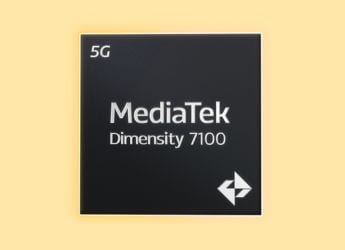- Home
- Science
- Science News
- World's First Water Wave Laser Developed by Researchers
World's First Water-Wave Laser Developed by Researchers

Photo Credit: Technion - Israel Institute of Technology
Scientists have created the first 'water-wave laser' that emits a beam through the interaction of light and water waves, and may be used in 'lab-on-a-chip' devices to study cell biology and test new drug therapies.
The laser could someday be used in tiny sensors that combine light waves, sound and water waves.
For now, the water-wave laser offers a "playground" for scientists studying the interaction of light and fluid at a scale smaller than the width of a human hair, researchers said.
The study conducted by Technion-Israel Institute of Technology is the first bridge between two areas of research that were previously considered unrelated to one another: nonlinear optics and water waves.
A typical laser can be created when the electrons in atoms become "excited" by energy absorbed from an outside source, causing them to emit radiation in the form of laser light.
Researchers, led by Professor Tal Carmon, showed for the first time that water wave oscillations within a liquid device can also generate laser radiation.
The possibility of creating a laser through the interaction of light with water waves has not been examined, mainly due to the huge difference between the low frequency of water waves on the surface of a liquid and the high frequency of light wave oscillations, Carmon said.
This frequency difference reduces the efficiency of the energy transfer between light and water waves, which is needed to produce the laser emission.
To compensate for this low efficiency, the researchers created a device in which an optical fibre delivers light into a tiny droplet of octane and water.
Light waves and water waves pass through each other many times (about one million times) inside the droplet, generating the energy that leaves the droplet as the emission of the water-wave laser.
The interaction between the fibre optic light and the miniscule vibrations on the surface of the droplet are like an echo, the researchers noted, where the interaction of sound waves and the surface they pass through can make a single scream audible several times.
In order to increase this echo effect in their device, the researchers used highly transparent, runny liquids, to encourage light and droplet interactions.
Furthermore, a drop of water is a million times softer than the materials used in current laser technology. The minute pressure applied by light can therefore cause droplet deformation that is a million times greater than in a typical optomechanical device, which may offer greater control of the laser's emissions and capabilities, scientists said.
The study was published in the journal Nature Photonics.
Catch the latest from the Consumer Electronics Show on Gadgets 360, at our CES 2026 hub.
Related Stories
- Samsung Galaxy Unpacked 2025
- ChatGPT
- Redmi Note 14 Pro+
- iPhone 16
- Apple Vision Pro
- Oneplus 12
- OnePlus Nord CE 3 Lite 5G
- iPhone 13
- Xiaomi 14 Pro
- Oppo Find N3
- Tecno Spark Go (2023)
- Realme V30
- Best Phones Under 25000
- Samsung Galaxy S24 Series
- Cryptocurrency
- iQoo 12
- Samsung Galaxy S24 Ultra
- Giottus
- Samsung Galaxy Z Flip 5
- Apple 'Scary Fast'
- Housefull 5
- GoPro Hero 12 Black Review
- Invincible Season 2
- JioGlass
- HD Ready TV
- Laptop Under 50000
- Smartwatch Under 10000
- Latest Mobile Phones
- Compare Phones
- OPPO Reno 15 Pro Max
- Honor Win RT
- Honor Win
- Xiaomi 17 Ultra Leica Edition
- Xiaomi 17 Ultra
- Huawei Nova 15
- Huawei Nova 15 Pro
- Huawei Nova 15 Ultra
- Asus ProArt P16
- MacBook Pro 14-inch (M5, 2025)
- OPPO Pad Air 5
- Huawei MatePad 11.5 (2026)
- Xiaomi Watch 5
- Huawei Watch 10th Anniversary Edition
- Acerpure Nitro Z Series 100-inch QLED TV
- Samsung 43 Inch LED Ultra HD (4K) Smart TV (UA43UE81AFULXL)
- Asus ROG Ally
- Nintendo Switch Lite
- Haier 1.6 Ton 5 Star Inverter Split AC (HSU19G-MZAID5BN-INV)
- Haier 1.6 Ton 5 Star Inverter Split AC (HSU19G-MZAIM5BN-INV)

















